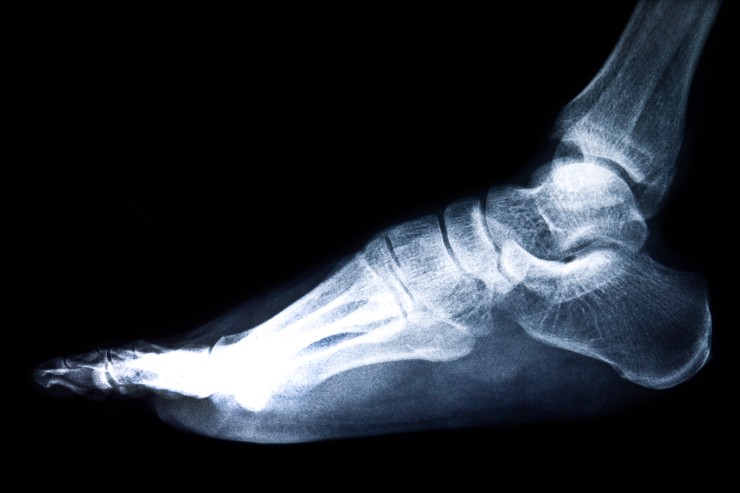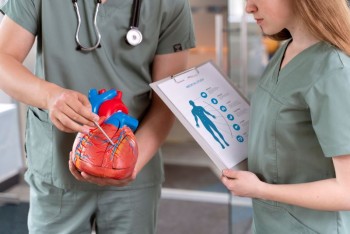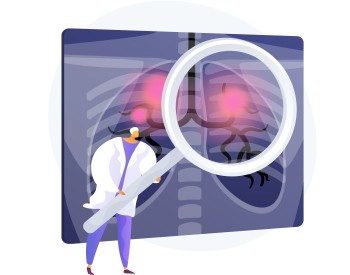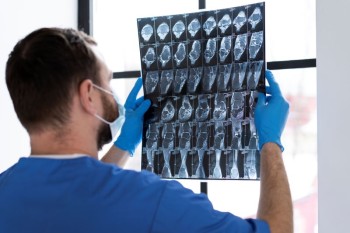
Evolving from traditional imaging methods, 3D CT Foot Scans offer a revolutionary approach to studying the foot's anatomy with unparalleled clarity and precision.
3D CT Foot Scan in India with Cost
Introduction
In the realm of medical imaging, precision is paramount, and the 3D CT Foot Scan takes center stage in providing detailed insights into the complexities of the human foot. This article embarks on a journey to unravel the intricacies of 3D CT foot imaging, shedding light on its significance, the scanning process, applications, and the transformative impact it holds in the field of podiatric diagnostics.
Understanding 3D CT Foot Imaging
Before delving into the scan's details, it's crucial to comprehend the foundation of 3D CT technology. Evolving from traditional imaging methods, 3D CT Foot Scans offer a revolutionary approach to studying the foot's anatomy with unparalleled clarity and precision.
The Procedure Unveiled
Have you ever wondered how a 3D CT Foot Scan captures the intricacies of this complex structure? Picture it as a detailed exploration, where the foot is meticulously scanned from various angles. Patients rest on a specialized table that moves through a circular machine, capturing cross-sectional images. This process produces a three-dimensional map, providing a comprehensive view of bones, joints, and soft tissues.
Addressing concerns about radiation exposure during the scan is essential. Modern CT machines employ advanced technologies to minimize radiation doses while ensuring high-quality images. Educating patients about these safety measures fosters a better understanding of the procedure.
Applications in Podiatric Diagnosis
The diagnostic prowess of 3D CT Foot Scans extends across various podiatric conditions. From identifying fractures, assessing arthritis, locating foreign bodies, to planning surgical interventions, this imaging technique plays a pivotal role in providing accurate and detailed information for effective diagnosis and treatment.
Advantages Over Traditional Imaging
Bid farewell to the limitations of traditional imaging techniques. 3D CT Foot Scans offer a quantum leap in precision, providing detailed images that enable healthcare professionals to diagnose conditions with unprecedented accuracy. The three-dimensional perspective enhances the understanding of complex foot structures and aids in devising tailored treatment plans.
Ensuring Patient Comfort and Safety
Ensuring patient comfort and safety is integral to the imaging experience. While concerns about radiation exposure are valid, modern CT machines are designed to balance safety with image quality. Radiologic technologists are trained to prioritize patient well-being, ensuring a positive and reassuring environment during the scan.
Special Considerations for Specific Cases
While 3D CT Foot Scans are generally applicable to various podiatric conditions, there are instances where alternative imaging methods may be more suitable. Tailoring the approach to specific cases ensures optimal diagnostic outcomes, taking into account individual health considerations.
Interpreting 3D CT Scan Results
Interpreting the results of a 3D CT Foot Scan requires specialized knowledge. Radiologists carefully analyze the images to identify abnormalities, assess structural integrity, and guide treatment decisions. Collaborative discussions between healthcare providers and patients contribute to a comprehensive understanding of the results.
Real-Life Cases and Success Stories
The impact of 3D CT Foot Scans on patient outcomes is noteworthy. Real-life cases and success stories underscore how this advanced imaging technique has played a pivotal role in accurate diagnoses, leading to successful treatment interventions and improved quality of life for individuals with podiatric conditions.
The Future of 3D CT Foot Scans
As technology continues to advance, the future of 3D CT Foot Scans holds promise for further enhancements. Ongoing research aims to refine imaging capabilities, potentially reducing scan times, increasing resolution, and expanding applications. The evolving landscape of podiatric diagnostics is set to benefit from these future innovations.
Patient Education and Awareness
Empowering patients with knowledge about 3D CT Foot Scans is crucial for informed decision-making. Increased awareness of the benefits, safety measures, and potential applications of this imaging technique fosters a collaborative relationship between patients and healthcare providers.
Costs and Insurance Coverage
Understanding the financial aspects of undergoing a 3D CT Foot Scan is vital. While the diagnostic value is significant, patients should be aware of potential costs and verify insurance coverage. Open communication with healthcare providers ensures transparency regarding any out-of-pocket expenses.
Common Misconceptions
To ensure a clear understanding, debunking common misconceptions about 3D CT Foot Scans is essential. Addressing concerns such as exaggerated radiation risks or misconceptions about scan duration contributes to a more informed and confident patient experience.
Comparison with Other Imaging Techniques
Comparing 3D CT Foot Scans with alternative imaging techniques, such as MRI and traditional X-rays, helps patients and healthcare providers understand the strengths and limitations of each method. Choosing the most suitable imaging approach depends on the specific diagnostic requirements of the individual.
Conclusion
In conclusion, the 3D CT Foot Scan emerges as a transformative force in the field of podiatric diagnostics. From its detailed procedure to real-life success stories and the potential for future advancements, this article aimed to provide a comprehensive understanding of the significance and impact of 3D CT Foot Scans. As we stride into the future of healthcare, this imaging technique plays a crucial role in enhancing precision and improving patient outcomes.
FAQs (Frequently Asked Questions)
1. What is the average duration of a 3D CT Foot Scan?
The duration of a 3D CT Foot Scan typically ranges from 15 to 30 minutes, depending on the complexity of the examination and the specific area being scanned.
2. Can pregnant individuals undergo a 3D CT Foot Scan?
While radiation exposure is minimized, pregnant individuals are generally advised to avoid unnecessary medical imaging. Alternative imaging methods may be considered, and consultation with a healthcare provider is recommended.
3. How frequently are 3D CT scans recommended for monitoring chronic foot conditions?
The frequency of 3D CT scans for monitoring chronic foot conditions varies based on the specific condition and the individual's medical history. Healthcare providers tailor imaging plans to each patient's unique needs.
4. Are 3D CT Foot Scans covered by insurance?
Insurance coverage for 3D CT Foot Scans depends on the specific insurance plan and the medical necessity of the procedure. Patients are encouraged to check with their insurance providers to understand coverage details.
5. Is there any discomfort associated with undergoing a 3D CT Foot Scan?
The procedure is generally painless. Patients may experience a sense of confinement during the scan, but the radiologic technologists are trained to ensure patient comfort throughout the process.
6. Is there any preparation required before undergoing a 3D CT Foot Scan?
Generally, no specific preparation is needed. However, it's advisable to inform the healthcare provider about any existing medical conditions, allergies, or medications you may be taking.
7. Can children undergo 3D CT Foot Scans?
Yes, children can undergo 3D CT Foot Scans. The radiation dose is carefully adjusted based on the child's size to ensure safety. However, healthcare providers will assess the necessity of the scan and explore alternative options when appropriate.
8. How soon can I resume regular activities after a 3D CT Foot Scan?
You can typically resume normal activities immediately after a 3D CT Foot Scan. There is no downtime associated with the procedure.
9. Are there any side effects or risks associated with 3D CT Foot Scans?
3D CT Foot Scans are generally safe, and the benefits of accurate diagnosis often outweigh potential risks. However, there is a minimal risk of radiation exposure. Healthcare providers carefully weigh the necessity of the scan against these potential risks.
10. Can individuals with metal implants or prosthetics undergo a 3D CT Foot Scan?
Yes, individuals with metal implants or prosthetics can undergo 3D CT Foot Scans. However, it's essential to inform the healthcare provider about any metal in the body to ensure the images are accurate and safe.
These additional FAQs aim to address common concerns and provide more comprehensive information about undergoing a 3D CT Foot Scan. Patients are encouraged to communicate openly with their healthcare providers to address specific queries and ensure a smooth imaging experience.
(0)
Login to continue



